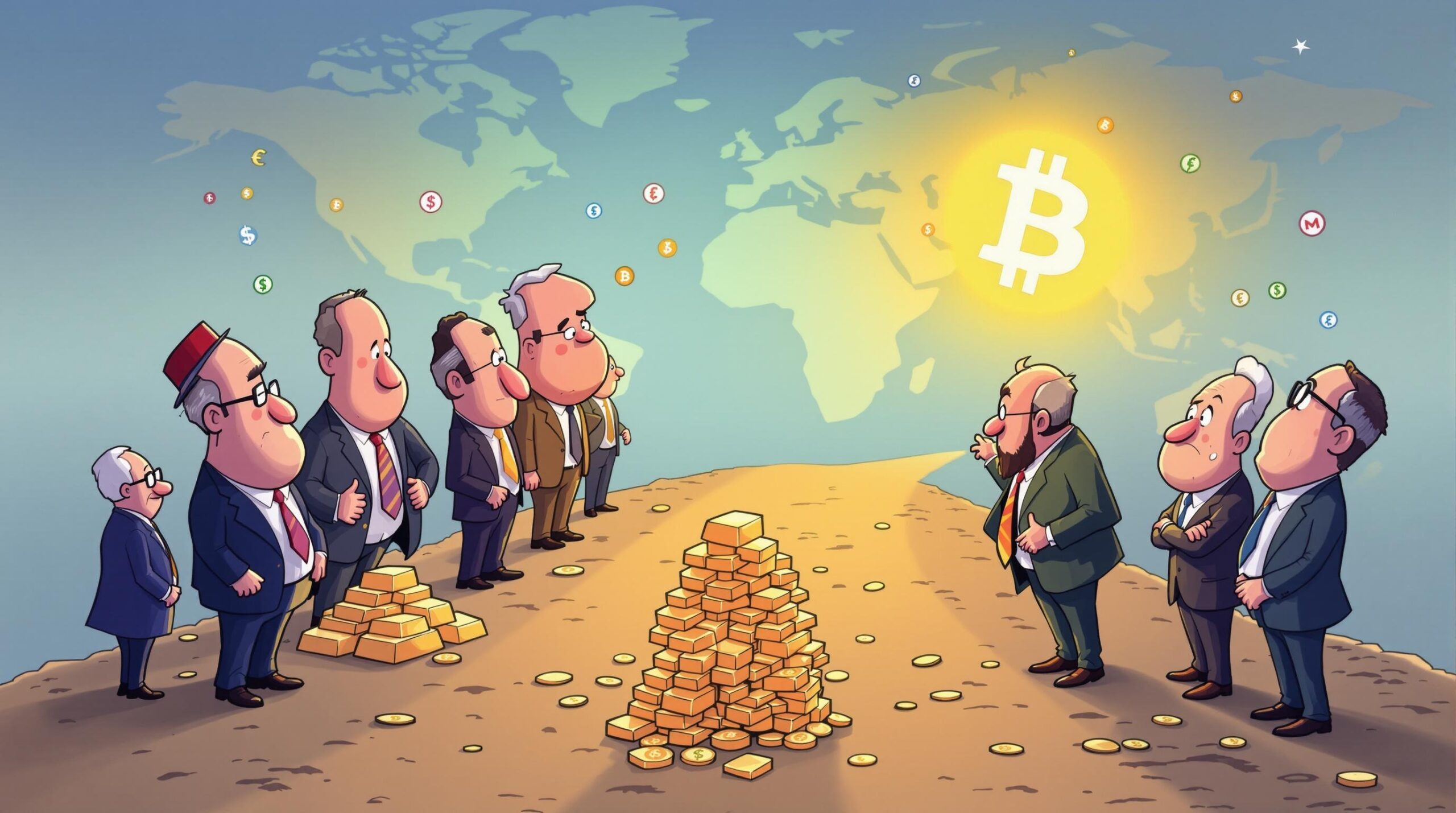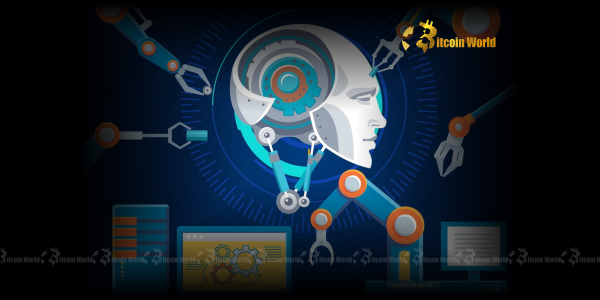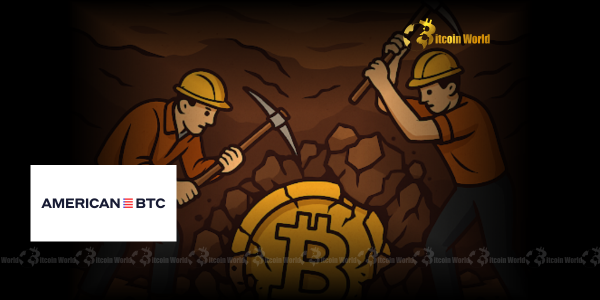BitcoinWorld

De-dollarization: BlackRock Unveils Profound Shift Towards Gold and Bitcoin
De-dollarization, a concept once relegated to niche economic discussions, is now taking center stage in global finance. The world’s largest asset manager, BlackRock, has brought this fascinating trend into sharp focus, suggesting that a significant shift is underway. Imagine a world where central banks, traditionally anchored to the U.S. dollar, are actively seeking alternatives. This isn’t just a theoretical exercise; it’s a tangible movement, driven by evolving geopolitical landscapes and economic imperatives. BlackRock’s insights, shared via @solidintel_x on X, highlight that this drive towards de-dollarization is compelling central banks to diversify their reserves, not only into established safe havens like gold but also, remarkably, to begin considering nascent digital assets such as Bitcoin (BTC). This revelation sparks crucial questions about the future of global monetary systems and the emerging role of digital currencies in the portfolios of even the most conservative financial institutions.
What Exactly is De-dollarization and Why is it Happening?
The term de-dollarization refers to the process of reducing the reliance on the United States dollar as the dominant currency for international trade, finance, and reserve holdings. For decades, the dollar has held an unparalleled position as the world’s primary reserve currency, the medium for most international transactions, and the benchmark for commodity prices. This dominance has afforded the U.S. significant economic and geopolitical advantages, often termed the “exorbitant privilege.”
However, several factors are now contributing to a gradual, yet persistent, push towards de-dollarization:
- Geopolitical Shifts: Recent geopolitical tensions and the weaponization of financial sanctions have prompted many nations to seek greater financial autonomy. Countries are wary of their foreign exchange reserves being frozen or their access to the global financial system being restricted, leading them to explore alternatives to dollar-denominated assets.
- Economic Diversification: The rise of new economic powers, particularly in Asia, has led to a natural desire for these nations to conduct trade in their own currencies or other non-dollar alternatives. This reflects a broader trend of a multipolar world economy.
- Inflation and Debt Concerns: Concerns over the U.S. national debt and inflationary pressures within the U.S. economy can also erode confidence in the dollar’s long-term stability, prompting central banks to look for more diverse and resilient reserve assets.
- Technological Advancements: The advent of central bank digital currencies (CBDCs) and blockchain technology offers new avenues for cross-border payments and reserve management that bypass traditional dollar-centric systems.
This multifaceted pressure indicates that de-dollarization is not merely a fleeting trend but a fundamental recalibration of global financial power dynamics.
Why Are Central Banks Actively Diversifying Their Reserves?
Central banks are the custodians of a nation’s financial stability, managing its currency, controlling inflation, and crucially, maintaining foreign exchange reserves. These reserves are vital for various purposes, including:
| Purpose of Reserves | Explanation |
|---|---|
| Currency Stability | To intervene in foreign exchange markets to support or stabilize the domestic currency. |
| Debt Repayment | To meet international obligations, such as repaying foreign debts. |
| Import Financing | To pay for essential imports, especially during times of economic stress. |
| Crisis Buffer | To act as a buffer against economic shocks or financial crises. |
Given these critical functions, the composition of reserves is a strategic decision. The move towards diversification is a proactive measure by central banks to enhance the resilience and security of their national wealth. Relying too heavily on a single currency, even one as dominant as the U.S. dollar, introduces concentrated risk. By spreading their holdings across multiple currencies and asset classes, central banks aim to mitigate risks associated with currency fluctuations, inflation in specific economies, and geopolitical vulnerabilities. This strategic shift is a direct response to the increasing momentum of de-dollarization, as nations seek to safeguard their economic sovereignty and ensure long-term stability in an unpredictable global environment.
Gold: The Enduring Safe Haven in a De-dollarizing World
For millennia, gold has served as the ultimate store of value, a tangible asset that transcends national currencies and political boundaries. In the context of de-dollarization, its appeal is more pronounced than ever. Central banks globally have been accumulating gold at a significant pace, reaching record levels of purchases in recent years. This isn’t merely a nostalgic return to an old standard; it’s a calculated strategic move for several compelling reasons:
- Inflation Hedge: Gold traditionally performs well during periods of high inflation, preserving purchasing power when fiat currencies might be losing value.
- Geopolitical Neutrality: Unlike sovereign bonds or currencies, gold is not tied to any single government or economy, making it a neutral asset less susceptible to political influence or sanctions.
- Tangible Asset: In an increasingly digital and interconnected world, the physical nature of gold offers a sense of security and finality that digital assets cannot yet fully replicate for central banks.
- Historical Precedent: Gold has proven its resilience through countless economic cycles, wars, and crises, providing a track record of stability that few other assets can match.
The increasing allocation to gold by central banks underscores a fundamental distrust in purely fiat systems and a desire for assets that exist outside the direct control of any single nation. It represents a tangible step in the broader trend of de-dollarization, providing a foundational layer of security and diversification for national reserves.
Bitcoin: The Digital Frontier in the Age of De-dollarization
While gold represents the traditional response to concerns about currency stability, BlackRock’s mention of Bitcoin in the same breath as gold signals a potentially revolutionary shift in central bank thinking. For years, Bitcoin was largely dismissed by mainstream financial institutions, viewed as too volatile, unregulated, and speculative for serious consideration. However, as the world grapples with the implications of de-dollarization, Bitcoin’s unique properties are starting to gain attention, even from conservative entities like central banks:
- Decentralization: Bitcoin operates on a decentralized network, meaning no single government or entity controls it. This makes it immune to the kind of political manipulation or sanctions that affect traditional fiat currencies.
- Scarcity: With a fixed supply of 21 million coins, Bitcoin is inherently deflationary, offering a stark contrast to fiat currencies that can be printed infinitely. This scarcity could appeal to central banks concerned about the long-term debasement of traditional currencies.
- Global Accessibility: Bitcoin can be sent and received anywhere in the world with an internet connection, offering a truly global and permissionless transfer mechanism.
- Transparency and Auditability: Every transaction on the Bitcoin blockchain is publicly recorded and verifiable, offering a level of transparency that traditional financial systems often lack.
While significant hurdles remain – including extreme price volatility, regulatory uncertainty, and the need for robust custodial solutions – the very fact that BlackRock, a titan of traditional finance, suggests central banks are “considering” Bitcoin is a monumental development. It hints at a future where digital assets play a more integral role in global reserve management, further accelerating the trajectory of de-dollarization.
BlackRock’s Perspective: A Catalyst for Global Financial Evolution?
When BlackRock, managing trillions in assets, speaks, the financial world listens. Their commentary on de-dollarization and the emerging role of gold and Bitcoin is not merely an observation; it can act as a significant catalyst. BlackRock’s foray into the crypto space, particularly with their spot Bitcoin ETF application and subsequent launch, signals a strong belief in the asset class’s long-term viability and institutional adoption potential. Their recent statements reinforce this conviction.
BlackRock’s perspective suggests that:
- Institutional Acceptance is Growing: Their acknowledgement of Bitcoin as a potential reserve asset lends immense credibility to the cryptocurrency, potentially paving the way for other major financial institutions to follow suit.
- A Pragmatic Approach: BlackRock is known for its data-driven and pragmatic investment strategies. Their assessment of de-dollarization and the resulting diversification indicates a calculated response to evolving global economic realities, rather than mere speculation.
- Shaping the Narrative: By publicly discussing Bitcoin in the context of central bank reserves, BlackRock helps to normalize the idea, shifting it from a fringe asset to a legitimate contender in the eyes of traditional finance and sovereign wealth managers.
This influential endorsement could significantly accelerate the pace at which central banks, and indeed other institutional investors, begin to seriously evaluate and potentially integrate digital assets into their strategic frameworks, furthering the ongoing trend of de-dollarization.
Benefits and Challenges of This Profound Shift
The pivot by central banks towards assets like gold and potentially Bitcoin in response to de-dollarization presents a complex array of benefits and challenges. Understanding these facets is crucial for appreciating the full scope of this global financial evolution.
Potential Benefits:
- Enhanced Reserve Resilience: Diversifying away from a single dominant currency reduces exposure to the economic and political risks of one nation, making national reserves more robust.
- Increased Financial Sovereignty: Nations gain greater control over their financial assets, reducing vulnerability to foreign sanctions or economic pressures.
- Inflation Protection: Assets like gold, and potentially Bitcoin, offer a hedge against inflation, preserving the purchasing power of national wealth over time.
- Modernization of Reserve Management: Exploring digital assets pushes central banks to innovate and adapt to new financial technologies, potentially leading to more efficient and secure reserve systems.
Significant Challenges:
- Volatility Concerns (especially Bitcoin): Bitcoin’s price volatility remains a major hurdle for central banks, which prioritize stability and capital preservation.
- Regulatory Uncertainty: The lack of a clear and consistent global regulatory framework for cryptocurrencies poses significant risks and complexities for official adoption.
- Custodial Risks: Securing large quantities of digital assets requires highly sophisticated and secure custodial solutions, an area still evolving for institutional-grade needs.
- Liquidity Issues: While Bitcoin’s market cap is growing, its liquidity for multi-billion dollar central bank transactions might still be a concern compared to established markets like U.S. Treasuries.
- Loss of Influence for the Dollar: For the U.S., de-dollarization could lead to a reduction in its “exorbitant privilege,” impacting its ability to finance deficits and exert global financial influence.
Navigating these benefits and challenges will require careful strategic planning, robust risk management, and a willingness to embrace new paradigms in global finance as de-dollarization continues its trajectory.
Actionable Insights for Investors and Policy Makers
The ongoing trend of de-dollarization and central bank diversification has significant implications for various stakeholders. Understanding these shifts can help both individual investors and policymakers make informed decisions.
For Individual Investors:
- Consider Diversification: Just as central banks are diversifying, individual investors might consider a more diversified portfolio that includes traditional safe havens like gold and potentially a small, well-researched allocation to digital assets like Bitcoin, understanding their inherent risks.
- Stay Informed: Keep abreast of global economic trends, geopolitical developments, and central bank policies. These factors will increasingly influence currency values and asset performance.
- Long-Term Perspective: Bitcoin, if adopted by central banks, would be a very long-term play. Short-term volatility will remain.
For Policymakers and Governments:
- Strategic Reserve Management: Governments must re-evaluate their reserve strategies to ensure resilience against global economic shocks and geopolitical pressures. This includes exploring a wider range of asset classes.
- Regulatory Clarity: For nations considering digital assets, developing clear and comprehensive regulatory frameworks is paramount to fostering trust and mitigating risks.
- Foster Domestic Currency Use: Promote the use of local currencies in international trade and bilateral agreements to reduce reliance on foreign currencies.
The insights from BlackRock underline a crucial juncture in global finance. The prudent management of this shift, whether by central banks adjusting their reserve composition or by individuals adapting their investment strategies, will define economic resilience in the years to come, profoundly influenced by the dynamics of de-dollarization.
The landscape of global finance is undeniably undergoing a profound transformation. BlackRock’s compelling insights underscore that de-dollarization is not a distant threat but a present reality, compelling central banks worldwide to strategically reassess their reserve holdings. This shift is clearly favoring timeless assets like gold, which continues to prove its mettle as a reliable store of value. More strikingly, the very notion that central banks are even beginning to “consider” Bitcoin signals a remarkable evolution in how traditional finance views digital assets. This dual approach—embracing both the ancient and the nascent—reflects a pragmatic desire for diversification and resilience in an increasingly multipolar world. While challenges persist, particularly concerning Bitcoin’s volatility and regulatory landscape, the momentum towards a more diversified global reserve system appears irreversible. The implications are vast, promising a future where economic power is more distributed, and the very definition of “sound money” continues to expand beyond conventional boundaries. This era of profound financial recalibration is upon us, and its unfolding will shape the economic destiny of nations for generations to come.
Frequently Asked Questions (FAQs)
Q1: What is de-dollarization?
A1: De-dollarization is the process by which countries and central banks reduce their reliance on the U.S. dollar as the primary currency for international trade, finance, and foreign exchange reserves. It involves diversifying into other currencies or alternative assets.
Q2: Why are central banks considering Bitcoin alongside gold?
A2: Central banks are primarily looking to diversify their reserves due to geopolitical tensions, economic instability, and a desire for greater financial autonomy. Gold serves as a traditional safe haven, while Bitcoin, with its decentralized and scarce nature, is emerging as a potential digital alternative that is immune to state control, making it attractive in a de-dollarizing world despite its volatility.
Q3: What role does BlackRock play in this discussion?
A3: BlackRock, as the world’s largest asset manager, holds significant influence in global finance. Their public statements and actions, such as applying for and launching a spot Bitcoin ETF, lend immense credibility to Bitcoin as an institutional asset. Their insights on de-dollarization and central bank interest in Bitcoin can accelerate the adoption and legitimization of digital assets among traditional financial entities.
Q4: What are the main challenges for central banks adopting Bitcoin?
A4: Key challenges include Bitcoin’s extreme price volatility, which conflicts with central banks’ need for stability; the lack of a clear and consistent global regulatory framework for cryptocurrencies; and the complexities associated with secure custody solutions for large digital asset holdings.
Q5: How does de-dollarization impact the average person?
A5: While the direct impact might not be immediately apparent, de-dollarization can influence currency exchange rates, inflation, and the stability of global trade. For investors, it may highlight the importance of diversified portfolios that consider both traditional and emerging alternative assets to hedge against shifts in global economic power.
Q6: Is de-dollarization a new phenomenon?
A6: While the term “de-dollarization” has gained prominence recently, the concept of nations seeking to reduce reliance on a single dominant currency has historical precedents. However, the current geopolitical and technological landscape, combined with the rise of digital assets, makes the present wave of de-dollarization distinct and potentially more impactful.
Did you find this article insightful? Share your thoughts on the evolving global financial landscape and the future of central bank reserves! Help us spread awareness about the profound shifts driven by de-dollarization by sharing this article on your social media platforms.
To learn more about the latest crypto market trends, explore our article on key developments shaping Bitcoin institutional adoption.
This post De-dollarization: BlackRock Unveils Profound Shift Towards Gold and Bitcoin first appeared on BitcoinWorld and is written by Editorial Team




